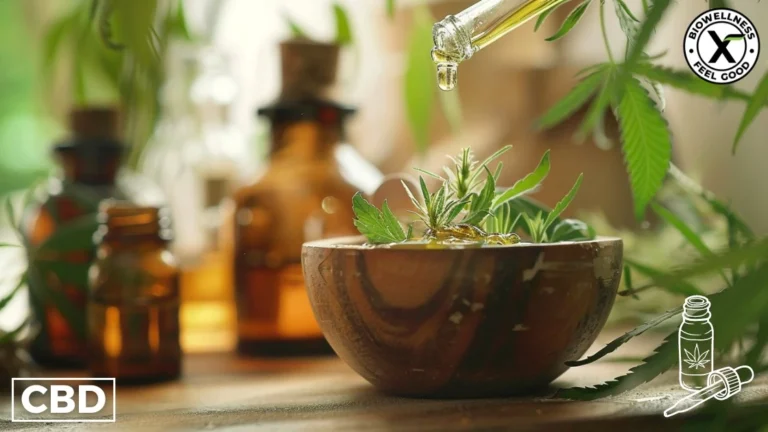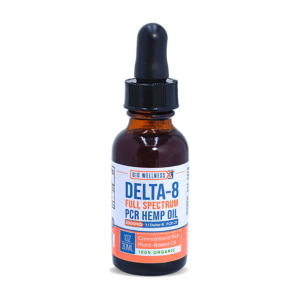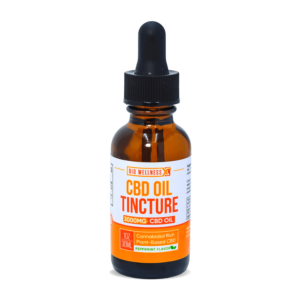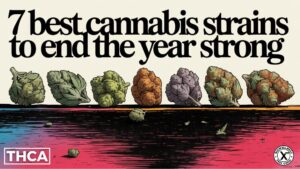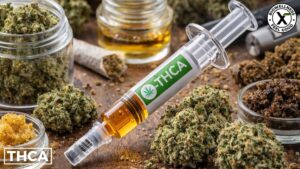key points
Starting your journey with medical cannabis might seem daunting at first. Even if you’re familiar with cannabis, the array of medications, the different forms of hemp-derived CBD products, administration methods, and THC potency levels can be overwhelming.
One common question we often hear is, “How do I take THC oil?” Among the various formats of medical cannabis available, oils stand out as a popular choice. Why? They’re convenient, discreet, and easy to use.
In this brief guide, we’ll explore how to consume cannabis oil. Specifically, we’ll focus on understanding THC oil treatment and the therapeutic benefits it provides. Even if you’ve been using THC oil for pain relief for a while and feel comfortable with it, expanding your knowledge can be helpful.
Understanding the Different Types of Cannabis Oil: Choosing the Right One for You
Before searching for the right cannabis oil for your needs, you should get clarity of what exactly cannabis oil is.
Cannabis oil is essentially an ingestible oil extracted directly from the dried flower of the cannabis plant. Various extraction methods exist, but at Aurora, we employ a CO2 extraction process.
So basically, cannabis oil is the most beneficial form of cannabis you can get, as it is packed with a lot of compounds like cannabinoids, terpenes, etc.
Now comes the important question: how many types of cannabis oil are there? And what are their medicinal benefits?
There are three sources of cannabis oil you can get; one comes from the cannabis sativa plant, which has lower doses of CBD and slightly higher doses of THC.
Then comes the cannabis indica with higher levels of CBD, and the THC content isn’t necessarily less.
The third and last one is the hybrid type known as cannabis hybrid. Many hybrid cannabis plants have varying ratios higher concentrations of THC and other cannabinoids, as each type is grown to increase THC levels.
Usually, for medicinal cannabis use only, a certain amount of cannabinoids is needed in cannabis products, and the ratios are mostly mentioned on the products.
People often use the term “CBD oil” when discussing different products, but it’s not always spot-on. Many CBD oil products actually contain a mix of cannabinoids. Most of the CBD oils you’ll find for health and wellness come from hemp rather than marijuana. So, to clear up any confusion, we like to sort them based on what cannabinoids they contain.
Three primary types of CBD oil commonly discussed include:
- Isolate (CBD) oil
- Full Spectrum CBD oil
- Broad Spectrum CBD oil
Isolate CBD Oil
CBD isolate is like the “pure CBD” or “CBD oil” of the cannabis world. It’s all about that singular ingredient—CBD (cannabidiol)—without any other cannabinoids present, terpenes, or those good-for-you fatty acids from the plant.
While isolate is wallet-friendly for CBD enthusiasts, it misses out on the potential entourage effect that comes with a full spectrum of cannabinoids. So, before you pick your CBD oil, take a moment to think about what suits you best and meets your needs.
Full Spectrum CBD Oil
Full spectrum CBD oil and CBD isolate are like two sides of the same cannabis coin, each with its unique flair. Picture this: full spectrum CBD oil is your lively garden party where CBD mingles with all the other cannabinoids, terpenes, and fatty acids found in the cannabis plant, including a hint of THC. It’s the ultimate whole plant experience, often dubbed as the full or whole plant extract.
Multiple studies suggest that CBD oil with a full-plant extract offers enhanced medicinal properties compared to CBD alone. This is because the oil contains a spectrum of cannabinoids and other chemical compounds, resulting in positive effects through chemical synergies known as the entourage effect.
Broad Spectrum CBD Oil
Broad-spectrum CBD oil sits between CBD isolate and full-spectrum CBD oils, offering a balanced mix of health benefits. It contains all cannabinoids and other chemical compounds except THC. This means you get all the goodness without the high, allowing you to experience some of the beneficial effects of the entourage effect.
Finding broad-spectrum CBD oil can be a bit like stumbling upon a hidden gem—it’s not as readily available as other types of CBD oil.
How to Use Cannabis Oil for Maximum Effects?
Patients relying on medical marijuana are finding cannabis oils particularly appealing due to their discreet nature, convenience, and faster onset compared to edibles.
These oils come in a range of potencies, from CBD-only options to those packed with high THC levels. Choosing the best consumption method often boils down to personal preference, and many patients incorporate multiple methods into their healthcare routines.
Sublingual Dosing
Applying cannabis oil under your tongue, known as taking it sublingually, is the quickest way to feel its effects.
The process is pretty simple, with a dropper, you place the oil under your tongue, where it gets absorbed directly into your bloodstream through the mucous membranes. Unlike consuming it through your stomach, which takes longer, sublingual absorption gets things going in just 15-30 minutes. This means more cannabinoids get into your digestive system faster, making the medicine more effective. That’s why we call it “boosting the bioavailability” of the drug.
Cannabis Oil in Cooking
An alternative method to savor your preferred cannabis oil is by incorporating a few drops into your favorite dishes. Enhance the flavor of roasted vegetables, salads, protein bites, or tacos by adding a dash of cannabis oil. However, remember that ingesting and consuming cannabis oil takes longer to produce effects compared to other methods. Therefore, it’s important to use it mindfully and allow your body ample time to feel the effects before considering additional doses.
Topical Cannabis Oil
Cannabis oil is excellent for creating topical applications. Simply add a few drops of CBD or THC oil to your preferred coconut oil using a dropper, resulting in a soothing cream with a delightful aroma.
Alternatively, incorporate cannabis oil into your favorite lotion products for added convenience. CBD oil blends seamlessly with coconut oil due to its rich fatty acid content. If you prefer ready-made options, explore our range of cannabis-infused creams for hassle-free use.
Smoking Cannabis Oils
A lot of people opt to smoke CBD oil because they prefer it that way. See, the natural taste of CBD oil can be a bit strong and earthy, which might not suit everyone’s taste buds. So, they find smoking it more enjoyable.
When it comes to smoking CBD oil, there are two main methods: using a pipe or vaping it with flavored oils in a vaporizer.
If you’re into using a pipe, you’ll need a water pipe, also known as a bong. Just put your CBD oil in there with some water, heat up the nail where the CBD concentrate sits, and inhale the smoke it produces. It might take a few tries to get it just right, but you’ll get the hang of it.
On the other hand, if vaping is more your style, grab yourself a vaping pen, also called a vaporizer. This way, you can add different flavors to your oil to match your taste while still enjoying the quick absorption benefits.
The cool thing about smoking CBD oil is that it gives you a high concentration of CBD to inhale, and its effects kick in pretty fast. When you inhale it, CBD gets into your bloodstream quickly through your lungs, sometimes bringing about the desired effect in less than 30 minutes.
Finding Your Perfect Dosage: A Guide to Safe and Effective Cannabis Oil Use
Finding the perfect dose of cannabis oil isn’t a one-size-fits-all situation; it can vary from person to person. Some prefer a little less, while others need a bit more with each serving. Our advice? Stick to a minimum intake at the start.
CBD oils typically come in liquid form or capsules. You have the flexibility to take the extracts on their own or mix them into food or drinks using the dropper provided. Liquid tinctures are commonly taken by placing drops directly under the tongue.
When it comes to tinctures, they’re often more concentrated than oils. So, if you’re used to taking 1 milliliter of oil, you might only need to take 0.5 milliliters of tincture. A good starting point is to begin with a small dose, like 0.25 milliliters, and gradually increase it as needed over time.
The recommended dose is 10 to 150 mg a day, but that’s still pretty broad. The right amount depends on your unique body and how it responds.
A good approach is to start with a low dose, say around 2 mg, and then gradually increase by 2 to 5 mg each time to see how you feel.
But hear us out; don’t panic; you can decide the dosage of your CBD oil on your own.
- Step 1: Let’s start by checking the strength of the CBD oil you’re using. Sometimes, the manufacturer makes it easy by showing the concentration of CBD right on the bottle. But if not, don’t worry – it’s simple to figure out with a little math.First, consider two things: the volume of the oil in the bottle (measured in ml) and the amount of CBD stated on the label (like 300 mg, 600 mg, or 1000 mg).To calculate the strength, just use this formula: [CBD in mg] / [volume of the vial in ml] = [CBD in MG/ml].For example, let’s say your bottle contains 30 ml of oil with 600 mg of CBD. Plug those numbers into the formula: [600 mg] / [30 ml] = [20 mg/ml]. So, in 1 ml of oil, you have 20 mg of CBD.
- Step 2: Measure the volume of the dropper. The dropper, usually included with the CBD oil, is what you’ll use to measure your dose. Most droppers hold around 1 ml of fluid, but it’s a good idea to check. Fill the dropper with a test fluid and let it fully drain, counting the drops. You should get around 20 drops. Keep this number handy for the next step.
- Step 3: Decide on your dosage.
It can be tricky to pinpoint the exact dose without trying CBD for yourself. But there are some general ranges based on factors like age and weight that can give you a ballpark estimate.
For an extra layer of safety, we suggest aiming for a daily intake depending on the symptoms you’re looking to ease. This way, you can find the sweet spot that works best for you. For the safe side, you can always contact a healthcare professional to get the exact prescription you desire.
Common Therapeutic Uses of Cannabis Oil: From Physical Relief to Anxiety
By tackling a variety of health issues, cannabis oil offers a well-rounded approach to feeling better, addressing both physical discomfort and other mental health disorders. It’s like having a versatile tool in your wellness toolkit, ready to lend a helping hand whenever you need it. Some of the well-known and well-informed CBD oil benefits are:
- Chronic Discomfort: Cannabis oil is often used to alleviate chronic aches and pains, providing relief to individuals dealing with long-term discomfort.
- Inflammation: The anti-inflammatory properties of cannabis oil make it a popular choice for managing inflammation-related conditions such as arthritis.
- Insomnia: Many people turn to cannabis oil to help with sleep issues, finding that it can promote relaxation and improve sleep quality.
- Poor Appetite: Cannabis oil has been found to stimulate appetite, making it beneficial for individuals experiencing a lack of appetite due to various health conditions or treatments like chemotherapy.
- Anxiety: Cannabis oil is often used as a natural remedy for anxiety, providing a calming effect that can help individuals manage stress and anxiety-related symptoms.
- Certain Epilepsy Conditions: There is growing evidence supporting the use of cannabis oil in treating certain types of epilepsy, particularly in reducing the frequency and severity of seizures.
- Substance Misuse Disorders: Cannabis oil may play a role in treating substance misuse disorders by alleviating withdrawal symptoms and cravings associated with addiction.
Before considering CBD as a supplementary treatment for your condition based on the above-listed CBD oil benefits, consult your doctor for guidance. They can assist in determining a safe CBD product, dosage, and regimen, especially in conjunction with your current medications. In some cases, your doctor may need to monitor medication levels in your blood.
Finding High-Quality Cannabis Oil Online
Now that you have gained all the necessary knowledge of the potential benefits of CBD, you must be wondering where you can find high-quality Cannabis oil online. Don’t fret; we have listed down a few of the amazing cannabis oil products available online.
Delta-8 tincture with PCR Oil:
This blend offers the best of both worlds, combining the unique properties of Delta-8 THC with the power of PCR (phytocannabinoid-rich) oil. Delta-8 is gaining popularity for its milder psychoactive effects compared to traditional THC, providing users with a more gentle and enjoyable experience. Paired with PCR oil, which contains a spectrum of beneficial cannabinoids and terpenes, this tincture offers a holistic approach to wellness.
Delta-10 tincture with PCR Oil:
Delta-10 is the latest buzz in the cannabis world, known for its uplifting and energizing effects. Like Delta-8, it’s infused with PCR oil, maximizing its therapeutic potential. Whether you’re looking for a mood boost or a burst of creativity, Delta-10 tincture with PCR Oil has you covered.
Pure CBD oil tincture:
A tried-and-true favorite. CBD, or cannabidiol, is celebrated for its wide range of potential health benefits, from reducing anxiety and inflammation to promoting better sleep. The pure CBD oil tincture delivers all the goodness of CBD in a convenient and easy-to-use form, perfect for integrating into your daily wellness routine.
When it comes to finding high-quality cannabis oil online, trust us to deliver the best of the best. You can get your desired products here.
Important Considerations Before Using Cannabis Oil: Legality and Drug Interactions
CBD is widely available in most parts of the United States, although its legal status has been somewhat uncertain. All 50 states have laws legalizing CBD but with varying levels of restriction. In December 2015, the FDA relaxed regulations to allow researchers to conduct trials involving CBD. Then, in 2018, the Farm Bill legalized hemp throughout the United States, effectively making it impractical to prohibit CBD — it’s like allowing oranges but banning orange juice.
The Farm Bill specifically excluded all hemp-derived products, including CBD, from the Controlled Substances Act, which criminalizes drug possession. Essentially, this means that CBD is legal if it originates from the hemp plants but not if it’s derived from cannabis (marijuana) — even though it’s the same molecule. Currently, many individuals purchase CBD online without needing a medical marijuana license, which is permissible in most states.
Drug Interactions With CBD Oil
While ongoing studies investigate potential CBD interactions with medications, one simple guideline remains: If your medications carry a grapefruit warning, it’s best to steer clear of CBD for now.
This warning alerts individuals to avoid grapefruit or grapefruit juice when taking certain medications, as they can increase medication levels in the bloodstream, leading to adverse effects or overdose.
Over 85 drugs interact with grapefruit and related citrus juices, inhibiting CYP3A4 and slowing medication metabolism, similar to CBD.
Common medication categories with grapefruit warnings include antibiotics and antimicrobials, anticancer medications, antihistamines, antiepileptic drugs (AEDs), blood pressure medications, blood thinners, cholesterol medications, corticosteroids, erectile dysfunction medications, GI medications, such as to treat GERD or nausea, heart rhythm medications, immunosuppressants, mood medications, such as to treat anxiety, depression, or mood disorders, pain medications, prostate medications, and more.
Always check your medication’s insert information or consult your doctor to be sure before adding CBD to your routine. Never discontinue any medications without your doctor’s approval, even when trying CBD. Additionally, topical CBD options like lotions and creams may be worth exploring, as they don’t usually enter the bloodstream like oils, edibles, or vaping solutions do unless they’re specifically designed as transdermal solutions.
Final Thoughts: How to Use Cannabis Oil
CBD oil has shown promise in alleviating symptoms associated with anxiety, mental health disorders, heart health concerns, and specific types of pain, among other medical conditions. However, despite available study findings, further research is required to reach definitive conclusions, with ongoing studies continuing to explore its potential benefits. Due to the yet undetermined scope of CBD’s applications, consulting a qualified healthcare professional before incorporating it into your regimen is advisable.
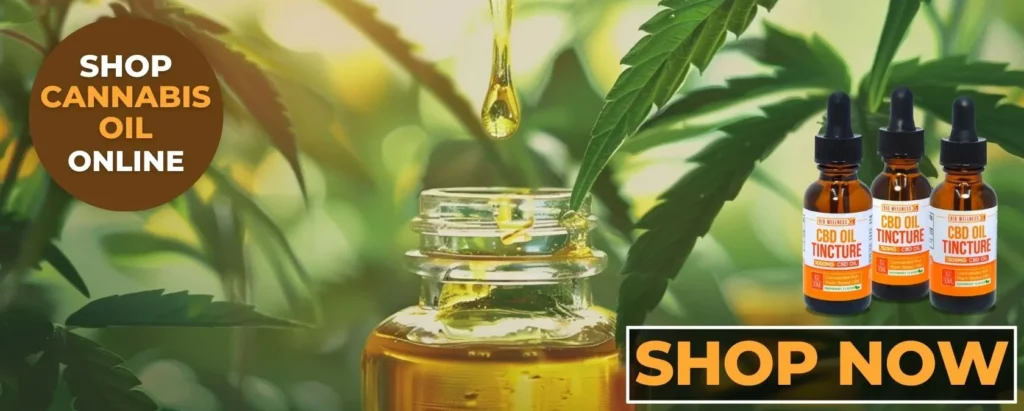
Legal Disclaimer:
By reading this information presented, you agree to release the author of any liability that comes from using this data. This post contains no legal advice. Claims about cannabinoids have not yet been approved by the FDA. Read the full legal disclaimer here.
Other Articles That May Interest You
- Is Delta-9 Legal?
- Is Delta-8 Legal in California?
- Does Delta-9 get you high?
- Where to buy Delta-8 gummies in Long Beach?
- Is Delta-9 a controlled substance?
- Is marijuana legal in California?
- Where to buy THCp gummies in California
References:
- Hemp Production and the 2018 Farm Bill – 07/25/2019 | FDA
- The Controlled Substances Act (dea.gov)
- (THCA-A) reduces adiposity and prevents metabolic disease
- THC is a potent PPARγ agonist with neuroprotective activity
- THCa markedly alleviates liver fibrosis and inflammation
- THCa inhibits prostate cancer tumor growth
- Cannabis (Marijuana) and Cannabinoids: What You Need To Know
- Cannabis use and cannabis use disorder
- Cannabis use in young people: The risk for schizophrenia
- Vaping Cannabis and Chronic Obstructive Pulmonary Disease
- Cannabis smoking and respiratory health: Consideration of the literature
- Cannabis for Chronic Pain: Challenges and Considerations
- Neurological Disorders in Medical Use of Cannabis: An Update
- Practical considerations in medical cannabis administration and dosing
- Comprehensive Review of Medicinal Marijuana, Cannabinoids, and Therapeutic Implications in Medicine and Headache
FAQs About Using CBD and THC Oil
CBD oil is derived from the hemp plant and contains cannabidiol, a non-psychoactive compound. THC oil, on the other hand, contains tetrahydrocannabinol, the psychoactive compound found in marijuana. CBD oil does not produce a high, while THC oil does.
Common side effects of CBD and THC oil may include dry mouth, dizziness, fatigue, and changes in appetite or weight. THC oil may also cause psychoactive effects such as euphoria, anxiety, or paranoia.
It’s important to consult with a healthcare professional before using CBD and THC oil alongside other medications, as there may be potential interactions that could affect effectiveness or safety.
The time it takes for CBD and THC oil to take effect can vary depending on factors such as dosage, method of consumption, and individual metabolism. Effects may be felt within minutes to hours after ingestion or application.
Yes, there can be interactions between CBD and THC oil and certain medications. It’s essential to discuss with a healthcare provider any potential interactions, especially with drugs metabolized by the liver, to avoid adverse effects.
While short-term use of CBD and THC oil is generally considered safe for most people, some research suggests that long-term use may carry risks such as tolerance, dependence, or withdrawal symptoms. More research is needed to fully understand the long-term effects of regular use.

